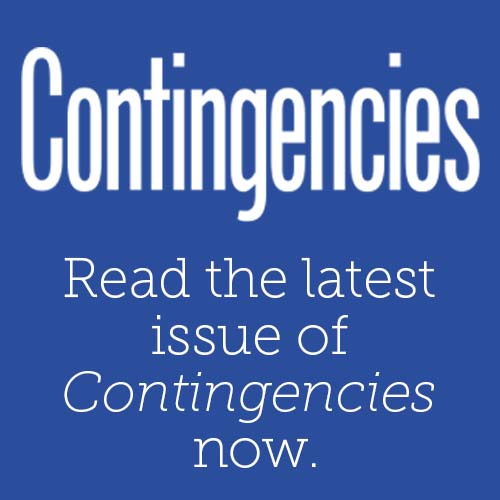Professionalism Counts, January 2018
|
New Standards for the New Year
By Beth Fitzgerald
Chairperson, Actuarial Standards Board
Last year, I wrote about newly revised actuarial standards of practice (ASOPs) and quoted Adlai Stevenson, who said: “Change for the better is a full-time job.” I should have mentioned that change for the better is also a long and difficult job: Behind each new ASOP are countless days and hours devoted to developing, drafting, exposing, redrafting, re-exposing, finalizing, and promulgating—not to mention the time and effort made by all interested parties to comment on the exposure drafts. This is appropriate, given the important role that standards play in providing guidance to actuaries and protecting the public.
The Actuarial Standards Board (ASB) defines “appropriate practice” in the face of emerging issues in actuarial practice, advancements in actuarial science, new laws and regulations, new technological and economic conditions, and changing environments. In 2017, the ASB adopted three new ASOPs, and the brief story of how each of these came into being illustrates how the ASB helps the profession adapt to changing circumstances by ensuring actuaries have standards appropriate for the conditions they face.
ASOP No. 51, Assessment and Disclosure of Risk Associated with Measuring Pension Obligations and Determining Pension Plan Contributions
In the wake of the 2008 recession and the subsequent heightened focus on public pension plans, the ASB reviewed the pension ASOPs to determine whether more guidance was needed in certain areas. As a result of that review, the ASB and its Pension Committee embarked on the development of what is now ASOP No. 51. This ASOP provides guidance to actuaries when performing certain actuarial services with respect to measuring obligations under a defined benefit pension plan and calculating actuarially determined contributions for such plans, with regard to the assessment and disclosure of the risk that actual future measurements may differ significantly from expected future measurements. The standard, which was first exposed in 2014, will take effect for any actuarial work product with a measurement date on or after Nov. 1, 2018.
ASOP No. 52, Principle-Based Reserves for Life Products under the NAIC Valuation Manual
The move to principle-based reserving (PBR) in life insurance has long been in the works and will finally be completed in the next few years. Last year, 42 states and territories with 75 percent of written premium adopted the NAIC Standard Valuation Law—the threshold for implementation of the NAIC Valuation Manual.
While the NAIC was developing the Valuation Manual, the ASB was keeping pace. The Task Force on Principle-Based Reserves was established under the Life Committee in 2006. A second iteration of this task force finalized the PBR ASOP last year. ASOP No. 52 provides guidance to actuaries when performing actuarial services with respect to developing or opining on principle-based reserves for life insurance that are reported by companies in compliance with applicable law based upon the NAIC Standard Valuation Law and the Valuation Manual. The standard, which was first exposed in 2013, is in effect for valuation dates on or after Dec. 31, 2017.
ASOP No. 53, Estimating Future Costs for Prospective Property/Casualty Risk Transfer and Risk Retention
Estimating future costs based on sound actuarial practice is essential to the integrity of the insurance and risk financing system and is key to fulfilling the promises embodied in insurance contracts. Before the ASB was established, the Casualty Actuarial Society (CAS) adopted the Statement of Principles Regarding Property and Casualty Ratemaking (Statement of Principles) in May 1988. This document featured four fundamental principles of ratemaking and discussed additional considerations.
Since then, ratemaking has grown much more complex and sophisticated, and in 2009 the ASB approved a task force under the Casualty Committee to begin looking into a general ASOP on ratemaking to complement the existing ASOPs. To create an ASOP for the core aspects of ratemaking that could be issued in a reasonable amount of time, the ASB developed ASOP No. 53 to pertain solely to the development or review of future cost estimates for prospective property/casualty risk transfer and risk retention. It should be noted that this ASOP incorporates all of the Considerations contained in the CAS Statement of Principles and addresses issues related to the estimation of costs for risk transfer and risk retention not currently addressed in existing ASOPs. ASOP No. 53, which was first exposed in 2014, takes effect for work performed on or after Aug. 1, 2018.
ASOPs are the product of long hours and hard work on the part of the ASB’s committees and task forces and rely on comments from all interested parties. The ASOPs are a cornerstone of the profession’s efforts to regulate itself, fulfill its responsibility to the public, and create change for the better.
(Featured in the January 2018 Actuarial Update.)







